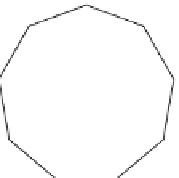Biology Reference
In-Depth Information
1
Na
1
Na
Al
0.8
Ca
0.6
Al
0.8
Ca
0.6
0.4
0.4
Fe
0.2
Zn
0.2
Fe
Zn
0
0
Cu
Mn
Cu
Mn
Mg
K
K
Mg
Aus-1
Argentine
Guatemala
Kenya
India
Aus-2
Brazil
Mexico
China
Art-1
Art-2
Cul-1
Cul-2
Fig. 15.2
Typical chart of ICP-MS of natural
C
.
Bovis
and its substitutes. Shown are the concen-
trations of various elements found in sample extracts at concentrations exceeding 1 mg/l. The data
represent relative concentrations, with the maximum concentration of each element in the extract
set at 1 (
n
= 3 )
( Okuda and Takahashi
2008
; Takahashi and Takami
2008
) as a coherent transition
radiation millimeter wave. Typical spectra between 0 and 30 cm
−1
are shown in
Fig.
15.3
. While the spectrum of Art-1 is comparatively complicated [Fig.
15.3b
],
the spectrum of Cul-1 [Fig.
15.3c
] is quite distinct and reveals differences between
the natural and artificial preparations [Fig.
15.3a
].
Coherent radiation is a popular light source that spans the millimeter- and
submillimeter-wave region. In this region, vibration and rotation characteristics
of various molecules determine the nature of the absorption bands; therefore, one
would expect the spectrum to be quite simple. Remarkably, this is the first report
of the spectra of natural samples attained using this method. In this study, the
spectra attained from Aus-1, Art-1, and Cul-1 were different, which reflects the
physical properties of the samples. In order to establish the utility of this novel
method, further analysis of the spectra is necessary.
This study identifies potential markers to distinguish natural
C
.
Bovis
from its
substitutes, including differences in organic composition (taurine and cholic acid),
inorganic ingredients (iron, magnesium, calcium), and spectroscopic properties.
It is possible that the higher organic and inorganic content of the substitutes could
affect the clinical actions of the substitutes relative to natural
C
.
Bovis
.
The clinical demand for natural
C
.
Bovis
is increasing at a rate that renders the
current supply inadequate. This has led to the development of active substitutes.
According to Yan et al. (
2007
), there is a high batch-to-batch uniformity of the sub-
stitutes and in vitro cultured
C
.
Bovis
, a property that facilitates proper clinical use.









































Search WWH ::

Custom Search